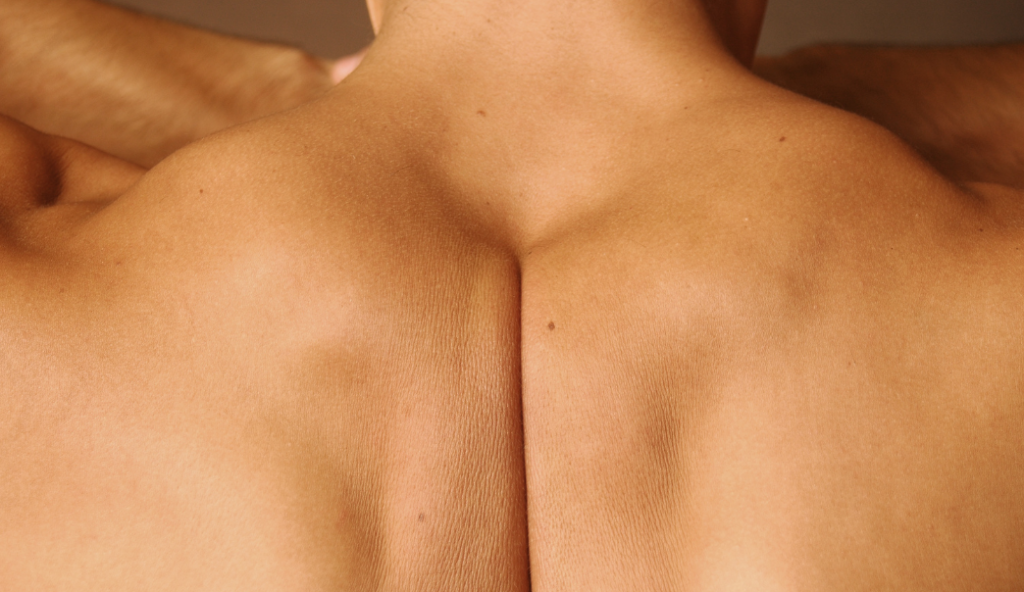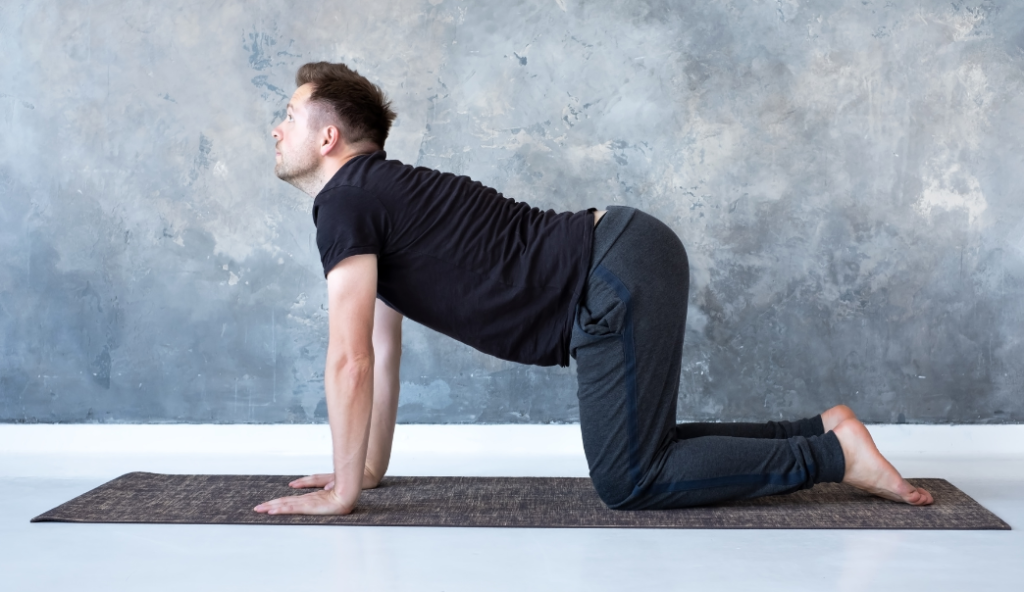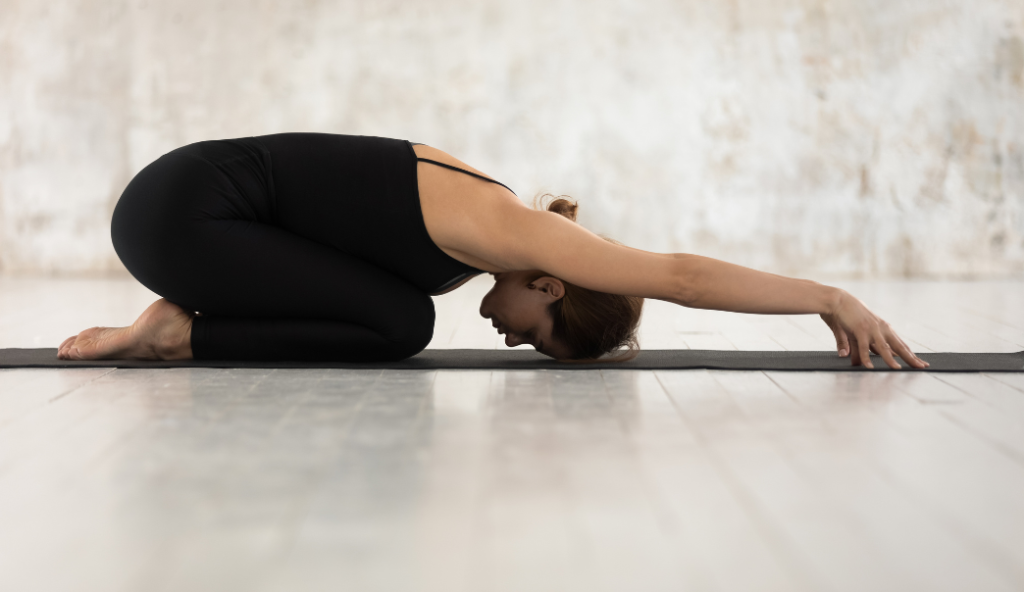Upper back tension is a common issue that many people experience. This discomfort can be challenging, whether caused by poor posture, stress, or muscle imbalances. This article will explore various stretches and exercises to help alleviate upper back tension and promote better overall health.
Stretch 1: Shoulder Blade Squeeze
One effective stretch for relieving upper back tension is the shoulder blade squeeze. To perform this stretch, start by sitting or standing up straight with your shoulders relaxed. Then, gently squeeze your shoulder blades together as if you’re trying to hold a pencil between them. Hold this position for 10-15 seconds and release. Repeat this stretch 5-10 times to help relax and strengthen the muscles in your upper back.
The shoulder blade squeeze is a simple yet effective stretch that targets the muscles in your upper back, specifically the rhomboids and trapezius. These muscles play a crucial role in maintaining good posture and shoulder stability. Regularly performing the shoulder blade squeeze can help alleviate tension and tightness in this area, promoting better posture and reducing the risk of upper back pain.
When performing the shoulder blade squeeze, it’s essential to maintain proper form. Keep your shoulders relaxed and avoid shrugging them up towards your ears. Instead, imagine gently pulling your shoulder blades down and towards each other, slightly contracting your upper back muscles.
In addition to relieving tension, the shoulder blade squeeze also helps to strengthen the muscles in your upper back. As you squeeze your shoulder blades together, you engage the rhomboids and trapezius, which are responsible for retracting and stabilizing the shoulder blades. Regularly incorporating this stretch into your routine can help improve the strength and endurance of these muscles, leading to better posture and reduced risk of injuries.
It’s important to note that while the shoulder blade squeeze is generally safe for most individuals, it’s always a good idea to consult with a healthcare professional or a qualified fitness instructor before starting any new exercise or stretching routine, especially if you have a pre-existing condition or injury.
The shoulder blade squeeze is a simple and effective stretch for relieving upper back tension. By incorporating this stretch into your routine, you can help relax and strengthen the muscles in your upper back, promoting better posture and reducing the risk of pain and injuries. Always listen to your body and consult a professional with concerns or questions.

Stretch 2: Cat-Cow Pose
Another great stretch to target the upper back is the cat-cow pose. This pose not only helps to increase spine flexibility but also releases neck and shoulder tension. It is a gentle and flowing movement that anyone can do, regardless of their fitness level.
To begin, find a comfortable space and get down on all fours with your hands directly below your shoulders and your knees below your hips. Take a moment to ground yourself, feeling the connection between your hands and the floor beneath you. Close your eyes and take a deep breath in, allowing your body to relax.
As you inhale, slowly arch your back and lift your chest towards the ceiling, allowing your belly to sink towards the floor. This is the cow pose. Feel the gentle stretch in your spine as you lengthen through the crown of your head. Take a moment to pause in this position, feeling the expansion in your chest and the opening in your heart.
Then, as you exhale, slowly round your spine upwards, tucking your chin towards your chest and drawing your belly in towards your spine. This is the cat pose. Feel the stretch in your upper back as you gently push the floor away with your hands. Allow your breath to guide your movement, flowing smoothly between the two poses.
Repeat the cat-cow sequence 5-10 times, moving with your breath. As you continue the movement, notice any tension or tightness in your upper back. Aim to release more with each repetition, allowing your body to soften and relax. Feel the gentle massage-like effect on your spine as you move through the poses.
As you practice the cat-cow pose, pay attention to the sensations in your body. Notice how the movement affects your breath and how the breath affects the movement. Allow yourself to fully immerse in the present moment, letting go of any thoughts or distractions.
Remember to listen to your body and modify the poses as needed. If you experience any pain or discomfort, ease off and find a variation that feels more comfortable for you. The cat-cow pose is a gentle and nurturing stretch, so honor your body’s limits and always practice with awareness.
By incorporating the cat-cow pose into your regular stretching routine, you can improve the flexibility and mobility of your upper back. This stretch is particularly beneficial for those who spend long hours sitting or working at a desk, as it helps to counteract the effects of poor posture and a sedentary lifestyle.
So, indulge in the soothing and rejuvenating cat-cow pose for a few moments each day. Your upper back will thank you for it, and you’ll feel renewed vitality and well-being.

Stretch 3: Thoracic Extension Stretch
The thoracic extension stretch is a simple yet effective exercise that relieves upper back tension. This stretch specifically targets the thoracic spine, the middle region of the spine between the cervical (neck) and lumbar (lower back) regions. By incorporating this stretch into your routine, you can improve thoracic mobility and reduce tension in the upper back.
To perform the thoracic extension stretch, find a comfortable chair and sit on the edge with your feet flat on the floor. This position ensures stability and allows you to focus solely on the stretch. Take a moment to relax and prepare yourself mentally for the exercise.
Once ready, interlock your fingers behind your head, with your elbows pointing outwards. This hand position helps to support your neck and upper back during the stretch. Take a deep breath in, and gently arch your upper back backward as you exhale.
As you arch your upper back, focus on lengthening your spine and opening the chest. Imagine that you are trying to create space between each vertebra in your thoracic spine. This conscious effort will enhance the effectiveness of the stretch.
While maintaining the arch in your upper back, allow your head to tilt slightly back, directing your gaze towards the ceiling. This movement further extends the thoracic spine and intensifies the stretch. However, be cautious not to strain your neck or overextend your back.
Hold this position for 10-15 seconds, feeling a gentle stretch in your upper back. It is important to remember that this stretch should not cause any pain. If you experience discomfort, ease off the stretch slightly until you find a comfortable position.
After holding the stretch, slowly return to the starting position by returning your head and upper back to an upright position. Take a moment to relax and assess how your upper back feels after the stretch.
Repeat the thoracic extension stretch 5-10 times, gradually increasing the number of repetitions as your flexibility improves. Pay attention to your body’s response each time you perform this stretch and adjust the intensity accordingly.
By incorporating the thoracic extension stretch into your routine, you can experience the long-term benefits of improved thoracic mobility and reduced tension in the upper back. This stretch is particularly beneficial for individuals who spend long hours sitting or working at a desk, as it helps counteract the forward hunching posture often associated with these activities.
Always consult a healthcare professional or a qualified fitness instructor before starting any new exercise program, especially if you have pre-existing medical conditions or injuries. They can provide personalized guidance and ensure that the thoracic extension stretch suits your needs.
Stretch 4: Child’s Pose with Upper Back Focus
The child’s pose is a relaxing stretch that targets the entire back, including the upper back. Begin by kneeling on the floor with your knees hip-width apart. Lower your buttocks towards your heels and extend your arms forward, resting your forehead on the mat. Take deep breaths and allow your upper back to relax and release tension. Hold this pose for 1-2 minutes or as long as comfortable.

Stretch 5: Seated Twist for Upper Back
A seated twist is a fantastic stretch to release tension in the upper back and improve spinal mobility. Start by sitting on a chair with your feet flat on the floor. Place your right hand on the outside of your left thigh and gently twist towards the left, using your left hand to support and deepen the stretch. Hold this position for 10-15 seconds, then repeat on the other side. Perform the seated twist 5-10 times on each side to help alleviate upper back tension.
Stretch 6: Door Frame Stretch
The door frame stretch is an excellent stretch to open up the chest and relieve tension in the upper back. Stand facing a door frame and place your forearms against the frame at shoulder height. Step one foot forward, keeping your elbows and forearms in contact with the frame. Lean forward slightly, feeling a stretch through your shoulders and upper back. Hold this position for 10-15 seconds, then switch the position of your feet and repeat. Perform this stretch 5-10 times to loosen tight muscles in the upper back.
Stretch 7: Neck Tilts and Rotations
Neck tilts and rotations are simple yet effective stretches for reducing upper back and neck tension. Begin by sitting or standing up straight with your shoulders relaxed. Slowly tilt your head towards one shoulder, feeling a gentle stretch on the opposite side of your neck. Hold this position for 10-15 seconds, then return your head to the center. Repeat this stretch on the other side. For neck rotations, gently rotate your head to one side, hold for a few seconds, then turn to the other. Perform these stretches 5-10 times to relieve upper back tension and improve neck flexibility.

Incorporating These Stretches into Your Daily Routine
Now that you know these beneficial stretches for upper back tension relief, it’s time to incorporate them into your daily routine. Consistency is key when it comes to addressing muscle tension and tightness. Choose a time of day that works best for you, and set aside a few minutes each day to perform these stretches. Whether in the morning, during a break at work, or before bedtime, find a routine that suits your lifestyle and commit to it. Making these stretches a regular part of your day can reduce upper back tension and improve overall well-being.
Additional Tips for Upper Back Tension Relief
In addition to incorporating the stretches mentioned above, there are a few other tips you can follow to help alleviate upper back tension. First, be mindful of your posture throughout the day. Sit and stand straight, with your shoulders relaxed and your back aligned. Avoid prolonged periods of sitting or standing in the same position, as this can contribute to muscle imbalances and tension.
Regular breaks to stretch and move can also help prevent upper back tension from building up. Additionally, consider incorporating exercises that strengthen the muscles in your upper back, such as rows or pull-ups. Building strength in these muscles can provide support and alleviate tension. Lastly, managing stress levels through relaxation techniques, such as deep breathing or meditation, can also positively impact your upper back health.
Maintaining Upper Back Health
Taking care of your upper back is essential for maintaining overall health and well-being. By incorporating these stretches into your daily routine, paying attention to your posture, and managing stress levels, you can effectively alleviate upper back tension and improve the quality of your life. Remember, it’s essential to listen to your body and consult a healthcare professional if you experience persistent or severe upper back pain. With consistency and dedication, you can enjoy a healthy and pain-free upper back.


